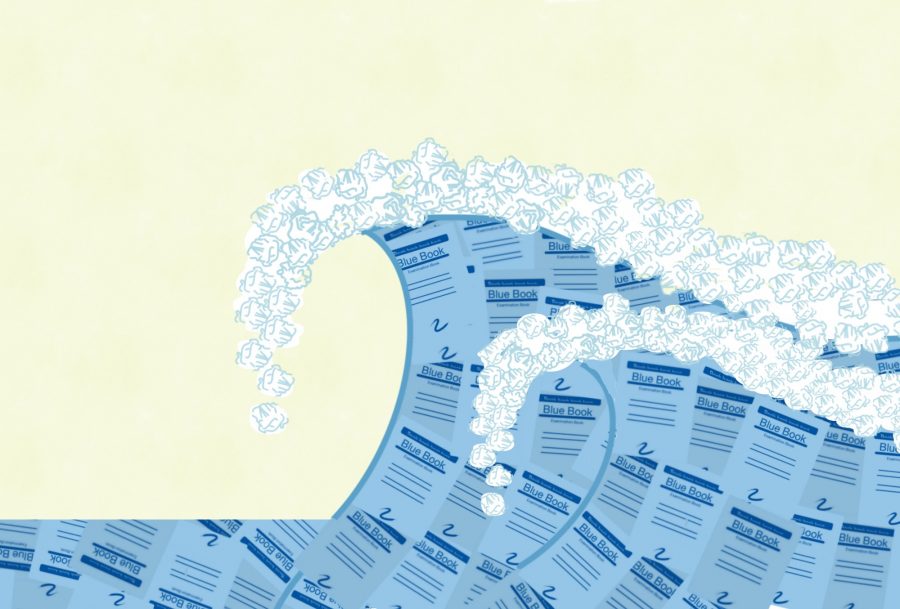For my first test at UT, my professor required students to get a blue book — a thin journal of notebook paper used primarily for essays. As an exchange student, this was new to me, and it took me a while to finally find one at Jester City Market. At my home university, spare paper was used for testing and distributed by the professor. I could not help but wonder why students are asked to buy a blue book just for one test at UT.
It is unsustainable to have to buy a blue book for one test when, in most cases, they are not fully utilized. Professors should think twice before requiring students to purchase and bring blue books to tests.
First and foremost, buying a blue book is a waste of resources. After a test, the extra pages in a blue book are unusable, and most students will not rip out and use the few pages left. Humans cut down 15 billion trees each year, and nearly four billion of them are used for paper material. Having an official notebook for the test is unnecessary considering the environmental impacts.
Furthermore, using a blue book does not provide something that regular paper can’t. In fact, it may provide a better chance for students to cheat during a test. Blue books are designed in a way that a cheat-sheet for the test could easily be concealed between pages. If professors prefer blue books simply to avoid cheating, they should provide paper for students and eliminate the possibility of scribbled notes on scratch paper.
“I had not thought about the reasons behind requiring a blue book for the exam other than blue books being a social convention for in-class written exams,” sociology professor Carlos Barreto-Beck said. “Blue books are already organized and stapled together, making it easier to transport and grade.”
According to Barreto-Beck, the paper in blue books tends to come from recycled sources, and the University has recycling programs in place to prevent the wastage of paper.
However, recycling is simply not enough in our overconsumption of paper. The paper industry is the fourth-largest contributor to greenhouse gas emissions among American manufacturing industries, and contributes 9 percent of the manufacturing sector’s carbon emissions. The less paper we consume, the better it is for future generations. In our case, it has direct benefits to students as well.
Linguistics professor Anthony Woodbury uses self-made exam paper during his tests. He uses just enough paper to allow students to answer all the questions without the overuse of paper. In addition, students do not have to worry about remembering to bring the blue book to the test. That is unnecessary extra stress when students are already anxious about the challenges of a test.
There is no denying that a blue book can be a convenient tool for professors. However, there are both external and internal costs to pay for this convenience. It contributes to the vicious cycle of cutting trees. It is a burden to students who have to remember to take the blue book to the test. It is time for professors to rethink this unnecessary practice. Let’s do better for the environment and say no to the blue book.
Chang is a philosophy junior from New Taipei, Taiwan





















